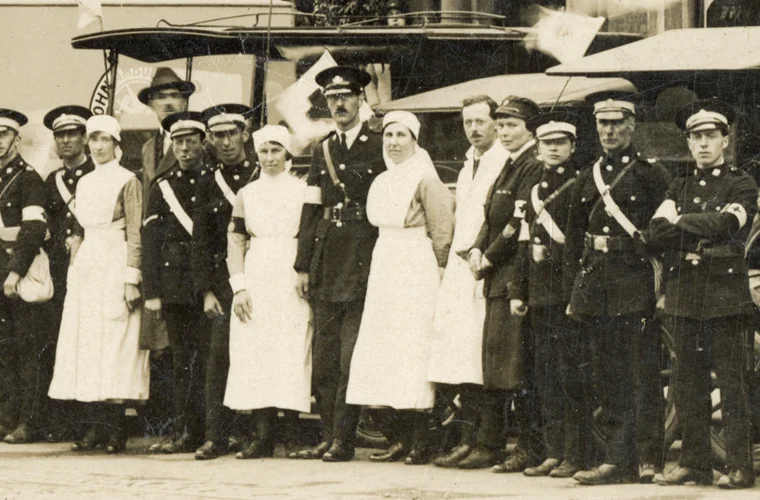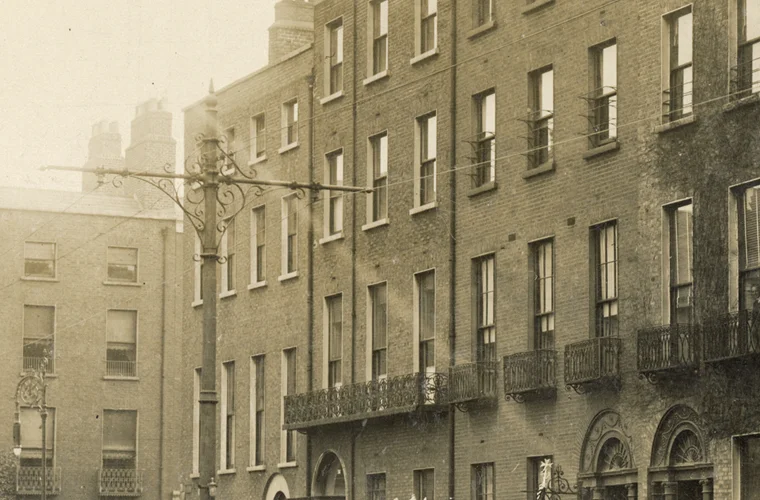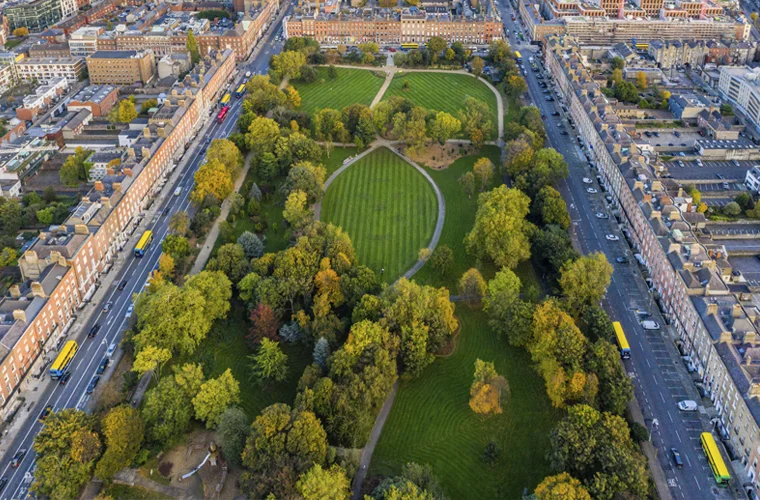Present Day
The five houses of Merrion Square underwent changes and transformations throughout the years.
By 1972, the ESB owned all five houses and converted them for office use. Alterations were made, including the insertion of a lift to the rear of number 41. The party garden walls were largely demolished, and the gardens almost completely subsumed under utilitarian, single-storey structures and electrical substations.
In 1982, Dublin City Council rejected an application for a ‘radical design’ by the controversial architect, Sam Stephenson, on behalf of the ESB, for a contemporary ‘glass office block together with Regency-style townhouses’ to the rear of numbers 39 - 43.
The surrounding area is now seeing rejuvenation, with the extension to the Goethe Institute to the rear of number 37 Merrion Square, the development of the Leinster Hotel on Lower Mount Street, and the new ESB headquarters on Fitzwilliam Street Lower.
The houses' varied history demonstrates their durability and flexibility, with notable persons, uses and organisations associated with them over almost 250 years – including members of the aristocracy, landed gentry, politicians, and many working in medicine. Sir Jonah Barrington, judge and politician (1757 – 1834), St. John Ambulance, the Emergency Field Hospital and the British Embassy connections are particularly significant.
The greatest threat to historic buildings in a small country like Ireland is redundancy. To remain relevant in modern times and ensure their survival for future generations, these historic buildings must be re-imagined and restored to the highest possible standard.






